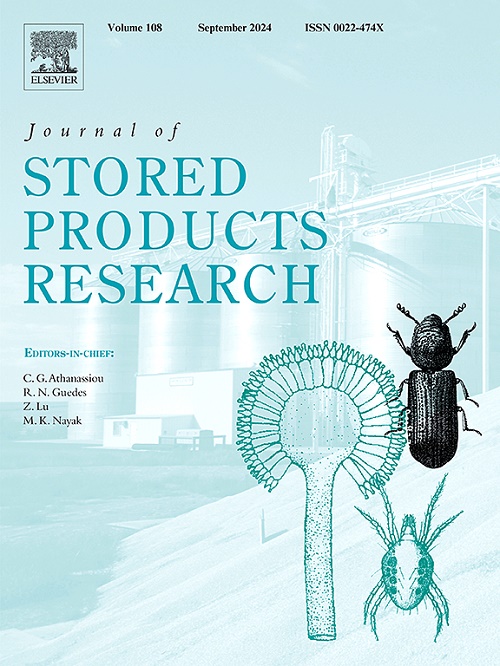Insect detection by molecular diagnostics in stored products: Results from a survey in the agrifood sector
IF 2.7
2区 农林科学
Q1 ENTOMOLOGY
引用次数: 0
Abstract
Insect pests cause significant losses to the agrifood industry by infesting both raw materials and processed products, making effective pest detection a critical aspect of stored product management. Traditional insect detection methods, such as visual inspection after grain sieving, have limitations in sensitivity and reliability, particularly regarding detection of immature stages sometimes hidden in the grain kernels. Molecular diagnostics, particularly DNA-based techniques, offer a promising alternative for improving pest detection accuracy in a grain sample. This study, conducted as part of the INSECT-FREE project, aimed to assess the perspectives of the European agrifood sector on the adoption of molecular diagnostic tools for insect detection. A structured survey was distributed to over 50 companies, including flour mills, grain storage facilities, and food processors, to evaluate current pest management practices, challenges, and the willingness to adopt DNA-based detection methods for insects detection. Results showed that over 90% of respondents considered the presence of insects to be a major concern, with traditional detection methods still dominant. However, 70% of companies using molecular techniques for other quality control applications, such as GMO and mycotoxin detection, expressed interest in incorporating DNA-based pest detection. This indicates a significant demand for reliable, rapid, and sensitive detection methods, emphasizing the potential for integrating molecular diagnostics into pest management strategies. The implementation of these molecular techniques could improve food safety, reduce economic losses, and support regulatory compliance. Further research should focus on optimizing cost-effectiveness and accessibility to facilitate widespread adoption of these molecular diagnostic methods in the agrifood sector.
用分子诊断方法检测储存产品中的昆虫:农业食品部门调查的结果
害虫通过侵害原材料和加工产品,对农业食品工业造成重大损失,使有效的害虫检测成为储存产品管理的关键方面。传统的昆虫检测方法,如筛粒后目视检测,在灵敏度和可靠性方面存在局限性,特别是在检测有时隐藏在籽粒中的未成熟阶段时。分子诊断,特别是基于dna的技术,为提高粮食样品中害虫检测的准确性提供了一种有希望的替代方法。这项研究作为无昆虫项目的一部分进行,旨在评估欧洲农业食品部门对采用分子诊断工具检测昆虫的看法。向50多家公司(包括面粉厂、粮食储存设施和食品加工商)分发了一份结构化调查,以评估目前的病虫害管理做法、挑战以及采用基于dna的检测方法检测昆虫的意愿。结果显示,超过90%的受访者认为昆虫的存在是一个主要问题,传统的检测方法仍然占主导地位。然而,70%使用分子技术进行其他质量控制应用(如转基因生物和霉菌毒素检测)的公司表示有兴趣采用基于dna的害虫检测。这表明了对可靠、快速和敏感的检测方法的巨大需求,强调了将分子诊断整合到害虫管理策略中的潜力。这些分子技术的实施可以提高食品安全,减少经济损失,并支持法规遵从。进一步的研究应侧重于优化成本效益和可及性,以促进这些分子诊断方法在农业食品部门的广泛采用。
本文章由计算机程序翻译,如有差异,请以英文原文为准。
求助全文
约1分钟内获得全文
求助全文
来源期刊
CiteScore
5.70
自引率
18.50%
发文量
112
审稿时长
45 days
期刊介绍:
The Journal of Stored Products Research provides an international medium for the publication of both reviews and original results from laboratory and field studies on the preservation and safety of stored products, notably food stocks, covering storage-related problems from the producer through the supply chain to the consumer. Stored products are characterised by having relatively low moisture content and include raw and semi-processed foods, animal feedstuffs, and a range of other durable items, including materials such as clothing or museum artefacts.

 求助内容:
求助内容: 应助结果提醒方式:
应助结果提醒方式:


